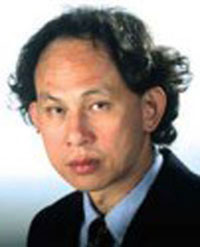RANGOON — Burma has made great strides in the area of media freedom in the past three years. It is one of the most dramatic and dynamic transformations in the Asean region—with Burma moving from a tightly government-controlled media environment to one of the freest press industries in the Southeast Asian bloc.
Western-based media freedom monitoring organizations have expressed astonishment over this remarkable development. However, recent events suggested that there could now be a serious roll-back on this new found liberty inside Burma
A case in point was the recent arrest of four journalists and the chief executive of a Rangoon-based weekly newspaper, the Unity Journal, which published a report alleging that Burma was building a chemical weapons facility in central Burma. The government accused the journalists of violating the 1923 State Secrets Act. Court proceedings have already started, and they could face lengthy prison sentences.
Local journalist associations have condemned the government actions, which they deemed a threat to media freedom and their investigative efforts. They said the government should have handled the incident more professionally and respectfully.
The manner in which the government has responded to press reports of late shows a growing unease among Burmese officials over the country’s lively, new media landscape. If this trend continues, it will further curb freedom of expression and have far-reaching repercussions for the ongoing reform process.

A liberal visa regime for foreign journalists reporting on the country’s manifold, pressing issues has now become more restrictive after the Ministry of Information decided to shorten visa periods. The decision follows controversy over the alleged massacre of dozens of Rohingya Muslims in northern Arakan State in early January. The government has vehemently denied the allegations—made by the UN High Commissioner for Human Rights Navi Pillay—and angrily dismissed media reports about the incident.
In the long run, Burma’s backsliding on media reforms could also affect numerous media projects initiated by the government, including various programs to turn state-own broadcasting entities, such as state-owned newspapers and television channels, into public media.
Mutual trust between the government and the media community are now at the lowest point since reforms started in 2011. They need to be strengthened as a free, independent media is essential to the success of the reform process initiated by President Thein Sein’s government.
Thanks to the rapid opening-up of the media Burma has been able to install a fresh image of normalcy in a short span of time, moving away from its longstanding reputation as a backward pariah state.
Furthermore, the proliferation of new print and broadcast media also
helps the government and political leaders connect with citizens throughout the country, including in remote, strife-torn ethnic areas. Under previous military regimes, the public were left without information about the country’s future and their daily lives.
The latest press freedom index released in February by the Paris-based Reporters Without Borders ranked Burma as the freest country in Asean after Thailand, Brunei, Indonesia and Cambodia, much to the chagrins of remaining Asean members. The index was the most positive
assessment of Burma’s media scene by a Western organization to date, although it did not take into consideration the recent arrests of journalists and other setbacks.
It is now doubtful if such optimism will hold over an extended period of time. Several well-known media monitoring organizations, which will soon release their annual findings and rankings, are busy reevaluating how sincere Burma is about its much-celebrated media reforms.
In the past few months, Naypyidaw has shown distaste for media investigations, especially on issues related to corruption, lack of
transparency and political infighting among top echelons. Earlier on, these topics were tolerated as the country was appealing to international financial institutions for loans and wooing foreign direct investment.
In anticipation of the upcoming elections in 2015, reports on political maneuverings and posturing among politicians are now making daily headlines. As prominent personalities jockey for influence, frequent media exposure of these political fights could weaken the government’s grip on power and hurt its popularity.
Burma’s journalists are young, unruly and eager to inform the public and push their new freedom to its limits. But to do so, they must improve their skills and professionalism in reporting, especially on sensitive issues related to ethnic conflict, national security and so on, as well as bettering their engagements with the authorities. Regional media organizations are also linking up with Burma’s media partners to exchange news and information, as well as providing training.
As the current Asean chair, Burma’s new media freedom is a regional showcase as no other Asean member has introduced such a drastic liberalization of the press in decades. All reforms in the region began as economic reforms before they were extended into political and social fields.
As Burmese authorities and the media are still on a learning curve together, it is necessary to strike a balance between full government control and total media freedom.
Media openness has generated goodwill and resulted in positive outcomes for Burma as a whole. Therefore, any effort to curb the present media freedom, even temporarily, will have adverse effects on the country’s future.
Kavi Chongkittavorn is a Thai journalist and his views do not necessarily reflect those of The Irrawaddy.















